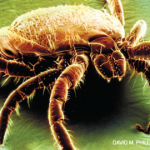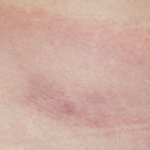That did it. Lynn and her husband burst out laughing. The tension and distrust seemed to melt away. The laughter made us allies. This was a tortuous, progressive disease, and I was trying the best I could, with the tools I believed in, to make a difference. After I anesthetized the wrist, Cathy handed me the syringe. The solution disappeared into the joint with only a tinge of discomfort. “There, one down,” I rolled my swivel seat to the other side of the exam table. “Ready for the other wrist?”
After washing up, I was dumbfounded when Lynn accepted the prescription for 10 mg daily prednisone. “It should quiet down the rest of the inflammation until we can get a second, slower acting medication on board to maintain your improvement. Now, let me tell you this ahead of time, the medication that I’m giving you information on, methotrexate, can be scary, but so is this disease. We have a window of opportunity to put this disease to sleep, but we need a strong medication to do the work. So let’s get to work.”
I picked up her chart to leave, but I could tell she had one last question.
Work with the Patient
“Bee sting therapy? Can I combine bee sting therapy with metho, methotrexate?” Lynn asked.
Internally, I deflated. Outwardly, I readily agreed to the bargain. Our worlds might never fully meet, science and alternative medicine, but she was meeting me more than halfway, and my goal was to put her RA in remission. If the bees can work with prescription medications, I can work with the bees. Let the stinging begin.
Charles Radis, DO, is a rheumatologist in Portland, Maine, and director of clinical research for Rheumatology Associates.
Fast Facts about Lyme Disease
Lyme disease is caused by the bacterium, Borrelia burgdorferi, and is transmitted to humans through the bite of infected blacklegged ticks. Typical symptoms include fever, headache, fatigue and a characteristic skin rash called erythema migrans. If left untreated, infection can spread to joints, the heart and the nervous system. Lyme disease is diagnosed based on symptoms, physical findings (e.g., rash), and the possibility of exposure to infected ticks. Laboratory testing is helpful if used correctly and performed with validated methods. Most cases of Lyme disease can be treated successfully with a few weeks of antibiotics. Steps to prevent Lyme disease include using insect repellent, removing ticks promptly, applying pesticides and reducing tick habitat. The ticks that transmit Lyme disease can occasionally transmit other tickborne diseases as well.



